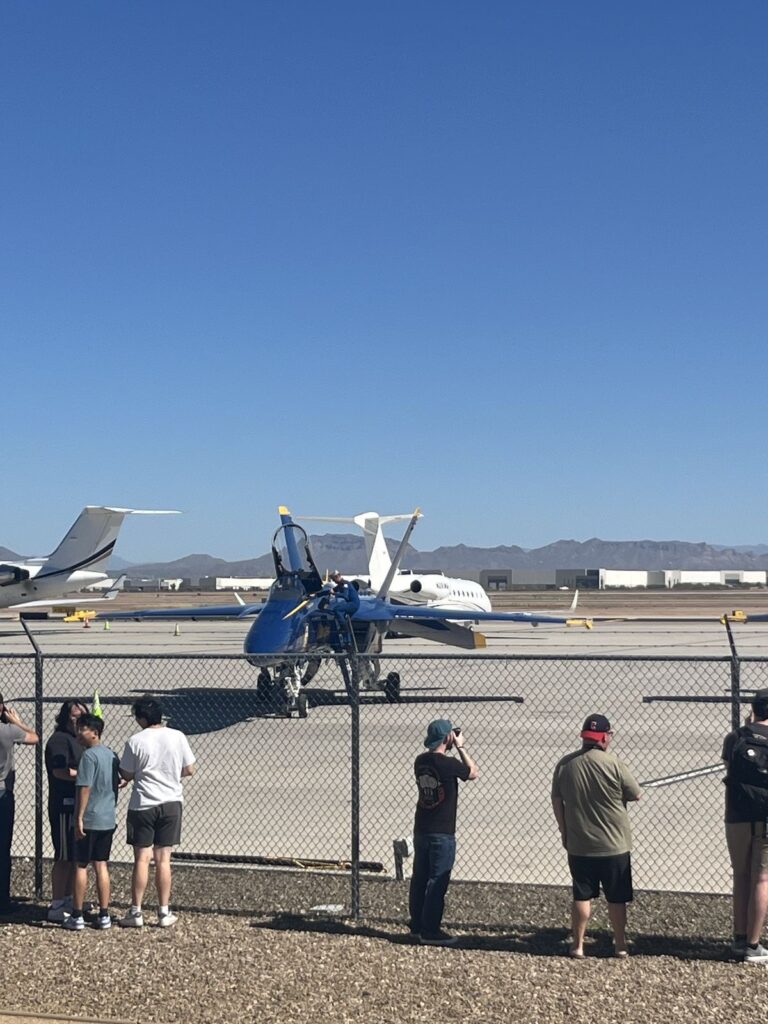Precision, discipline, and teamwork—these are the hallmarks of a Blue Angel pilot. As members of the U.S. Navy’s Flight Demonstration Squadron, Blue Angel pilots represent the pinnacle of naval aviation skill and professionalism. Their blue and gold F/A-18 Hornets are instantly recognizable symbols of excellence, performing breathtaking aerial maneuvers that showcase not only pilot ability but also the Navy and Marine Corps’ commitment to precision flying and teamwork.
Becoming a Blue Angel pilot is no ordinary career step. Each pilot selected for the team is already a seasoned naval aviator, typically with at least 1,250 flight hours and extensive operational experience. Many come from front-line fighter or strike fighter squadrons, where they’ve deployed on aircraft carriers and flown combat missions. Joining the Blue Angels means taking that skill and applying it to some of the most demanding flying imaginable—formation aerobatics separated by as little as 18 inches.
The team performs across the United States, inspiring millions each year with a combination of power and finesse. Every show is the product of countless hours of training, rehearsals, and precise coordination. Before each demonstration season, the pilots train intensively over the Gulf of Mexico near Pensacola, Florida, where the Blue Angels are based. During this period, they practice the same maneuvers repeatedly, perfecting timing and symmetry until the entire formation moves as one.
Each pilot’s role is clearly defined. The Flight Leader, known as the “Boss,” flies at the center of the formation and sets the pace for every maneuver. The wingmen hold tight formations at incredible proximity, relying on trust and muscle memory. The solo pilots perform high-speed passes, mirror formations, and opposing maneuvers that test the limits of both pilot and machine. When these elements come together in a demonstration, the result is a stunning display of what naval aviation can achieve.
But life as a Blue Angel pilot isn’t only about flying. It’s also about service and connection. The team’s mission extends beyond the air show circuit—they serve as ambassadors for the Navy and Marine Corps, visiting schools, hospitals, and community events in every city they visit. These interactions allow them to inspire future aviators and share the values of dedication, teamwork, and excellence that define the military profession.
Each season, the Blue Angels also face the emotional challenge of transition. Pilots typically serve two or three years before returning to fleet duty or taking on new leadership roles. When they depart, their successors step into a legacy built on decades of performance and precision dating back to the team’s founding in 1946. Every maneuver performed today traces its lineage to those early years when the Navy created the Blue Angels to demonstrate the power and professionalism of carrier aviation.
Whether soaring in tight diamond formation or performing a heart-stopping solo roll, Blue Angel pilots embody the very best of naval aviation. Their skill, teamwork, and dedication continue to inspire audiences around the world—reminding everyone who watches that excellence in the air begins with commitment on the ground.



